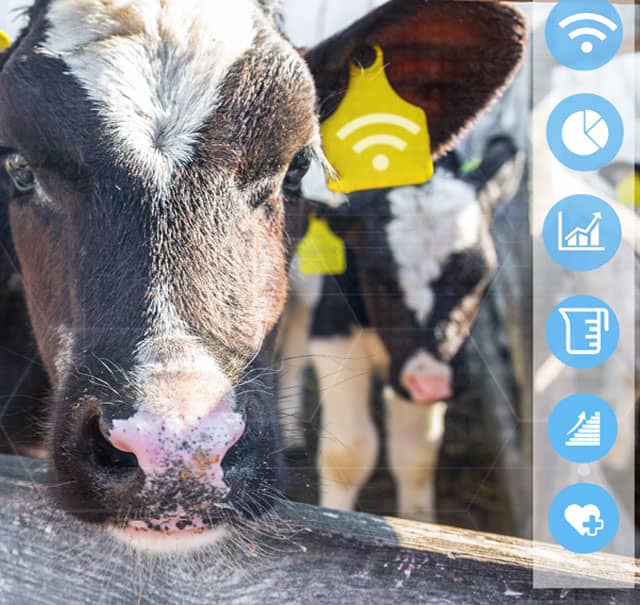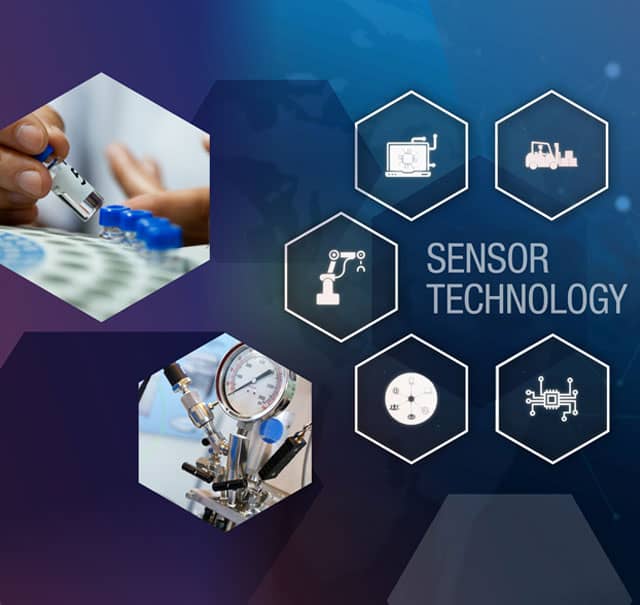New Battery-Free RFID Sensor Technology for New Applications
Use Cases in Buildings and Agriculture
ANIMAL HUSBANDRY
Temperature Control for Farm Animals with Sensors
According to Statista, 2015 to 2021 were by far the warmest years since weather records began. Extreme weather conditions and the associated environmental consequences have a negative impact on animals. Increased heat puts animals under heat stress and impairs milk production and fertility in cows, for example. Cold stress produces similar impairments. Strict temperature control is necessary for optimal animal care and high productivity in livestock operations.
RFID sensor tags can be applied to the animals' identification tags or, for example, in the barn. The application is possible on metal surfaces as well as on other surfaces. The sensors integrated in the tags measure the temperature in the barn. The measured values are read by RFID readers and transmitted to a central database. An adjustment of temperature limits is performed. Farmers can monitor the temperature and intervene if the limits are exceeded or not reached. The productivity of the livestock increases.

Livestock experience heat or cold stress when temperatures deviate, which negatively impacts productivity.

Insulation material loses its effectiveness in the presence of moisture. Monitoring with sensors prevents long-term damage.
CONSTRUCTION
Monitoring of Insulation Materials
Insulation materials consist of an air trapping structure that creates an insulating effect. If the material becomes damp or wet, the air is displaced by the entering water and the insulating effect decreases until the insulation material dries. Long-term wetness can lead to the development of mold in the insulation material. Moisture enters the material not only through weathering, but also from the indoor air inside the building.
As a result, the insulation material must be dried or replaced. Monitoring with RFID sensor tags prevents long-term damage. The tag is applied to the insulation material, and an integrated sensor measures the moisture in the area around the tag. Moisture penetration is detected by the sensor and transmitted via RFID. Abnormally high moisture levels are detected at an early stage and can be remedied by airing or replacing the insulation material. Long-term damage and impairment of the insulating effect of the installed material are prevented.
BUILDING MANAGEMENT
Increased Health and Safety in the Workplace with Sensor Technology
Temperature measurement of people and in office buildings is used to implement protective measures to increase hygiene and safety in the workplace. Excessively high temperatures have a negative effect on the human body. At the same time, people suffering from the flu or other illnesses exhibit increased temperatures. By means of temperature monitoring via sensor technology, deviations from normal temperatures can be detected. The RFID sensor tags are applied in offices. In the future, the possibility of an application close to the body is also planned.
The temperature in the vicinity of the RFID sensor tags is measured and captured by readers via RFID. Countermeasures can be taken in the event of deviations from normal temperatures or defined limit values. The isolation of sick people in office rooms or the switch to home office, for example, is possible. A smart cooling system uses the values captured by the sensors to adjust the room temperature in offices. Safety and health in the workplace are increased.

Temperature monitoring of people and in office spaces enables rapid detection of abnormal temperatures.





